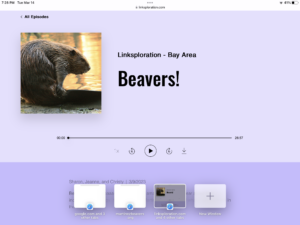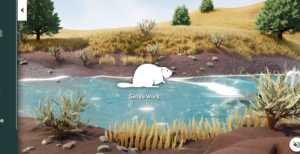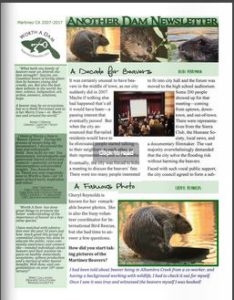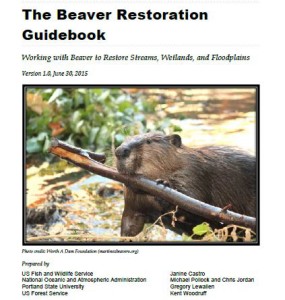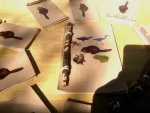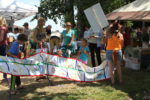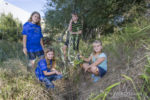Great news coming out of Rhode Island where both our friends Mike Callahan and Ben Goldfarb helped find a sweet end to a beaver complication.
Beavers Continue Their Rhode Island Comeback

CUMBERLAND, R.I. — At the Cumberland Land Trust’s nature preserve on Nate Whipple Highway, beavers created numerous dams on East Sneech Brook in the years after their arrival in 2014, flooding the property and forcing the organization to detour its hiking trail and build a boardwalk over the wettest areas.
Worse, the flooding killed many trees in the Atlantic white cedar swamp, a rare habitat found at just a few sites in Rhode Island.It’s a sign that beavers are continuing their comeback in Rhode Island, after being extirpated from the region about 300 years ago.
When the white cedar trees began to die, the land trust took action to address the situation. They hired a Massachusetts beaver-control expert to advise them on how to install a series of water-flow devices — a combination of wire fencing and plastic pipes going through the beaver dam that tricks beavers into thinking their dam is still working but which allows the water to flow down the stream unhindered.

Hurray for Mike! Hurray for the Cumberland land Trust! Just because Rhode Island has the word ‘Island’ in its name doesn’t mean you are going to avoid beavers. You get what we all get. And its good to know you understand how to cope.
According to Ben Goldfarb, author of the award-winning 2018 book Eager: The Surprising, Secret Lives of Beavers and Why They Matter, beaver ponds also help to recharge aquifers, dissipate floods, filter pollutants, and ease the impact of wildfires. A 2011 report he highlighted estimated that restoring beavers to one river basin in Utah would provide annual benefits valued at tens of millions of dollars.
“Even acknowledging that beavers store water and sustain other creatures is insufficient,” Goldfarb wrote. “Because the truth is that beavers are nothing less than continental-scale forces of nature, in large part responsible for sculpting the land upon which we Americans built our towns and raised our food. Beavers shaped North America’s ecosystems, its human history, its geology. They whittled our world, and they could again — if, that is, we treat them as allies instead of adversaries.”
“Great blue herons gravitate toward newly flooded areas with dead standing trees,” Brown said. “But beaver ponds aren’t perpetual. They come and they go. Beavers create a dynamic state of change that can benefit a lot of things.”
Yes, yes they do. Including humans. I’m so glad you could see the forest for the [cedar] trees and make the right decision. You are a Land Trust after all, that should include wetlands and wildlife right?
There’s time for a little bit more good news right? I mean both its a little big of news and a little bit good, Well we are grading on a curve. And its USDA, So I’m pretty sure its good.
Helping beavers move to the suburbs
Nick Kaczor, CWB, an assistant manager at the Rocky Mountain Arsenal National Wildlife Refuge, met with Wildlife Services in Colorado to explain that the arsenal was going to try to re-establish a local beaver population. The refuge management plans include promoting a native population of American beavers (Castor canadensis), which would aid in restoration of a stream.
At the same time, another cooperator was requesting relief from damage caused by beaver on a suburban property in southern Douglas County.
The Rocky Mountain Arsenal National Wildlife Refuge, a 15,000-acre urban wildlife refuge just north of Denver, seeks to conserve and enhance populations of plants, fish and wildlife and to provide compatible public uses. Over time this land has transitioned through a variety of uses, first from prairie to farmland, then to a military site in the 1940s and to a chemical production site in the 1950s. A public-private partnership carried out clean-up efforts from the 1980s through 2010, and today the site is a sanctuary for more than 330 wildlife species including bison (Bison bison), black-footed ferrets (Mustela nigripes), and burrowing owls (Athene cunicularia).
Hmmm so someone wants beavers and someone wants to get rid of beavers. Wait, don’t tell me,I know how this ends.
 Under a permit from Colorado Parks and Wildlife, Wildlife Services-Colorado used suitcase traps to capture five beaver causing damage elsewhere. They were trapped during the summer months until mid-September in order to relocate them when they were old enough to survive on their own and find adequate habitat before winter.
Under a permit from Colorado Parks and Wildlife, Wildlife Services-Colorado used suitcase traps to capture five beaver causing damage elsewhere. They were trapped during the summer months until mid-September in order to relocate them when they were old enough to survive on their own and find adequate habitat before winter.
They were released on the refuge at sites where staff provided fresh-cut trees for temporary forage and shelter. Refuge staff will continually monitor the sites, while also protecting bald eagle (Haliaeetus leucocephalus) nest trees from beaver damage.
Wildlife Services-Colorado appreciated this opportunity to support a localized recovery effort and the recognition we received for it from the Colorado Trappers and Predator Hunters Convention. We look forward to finding more beaver that are looking for a suburban Denver lifestyle.

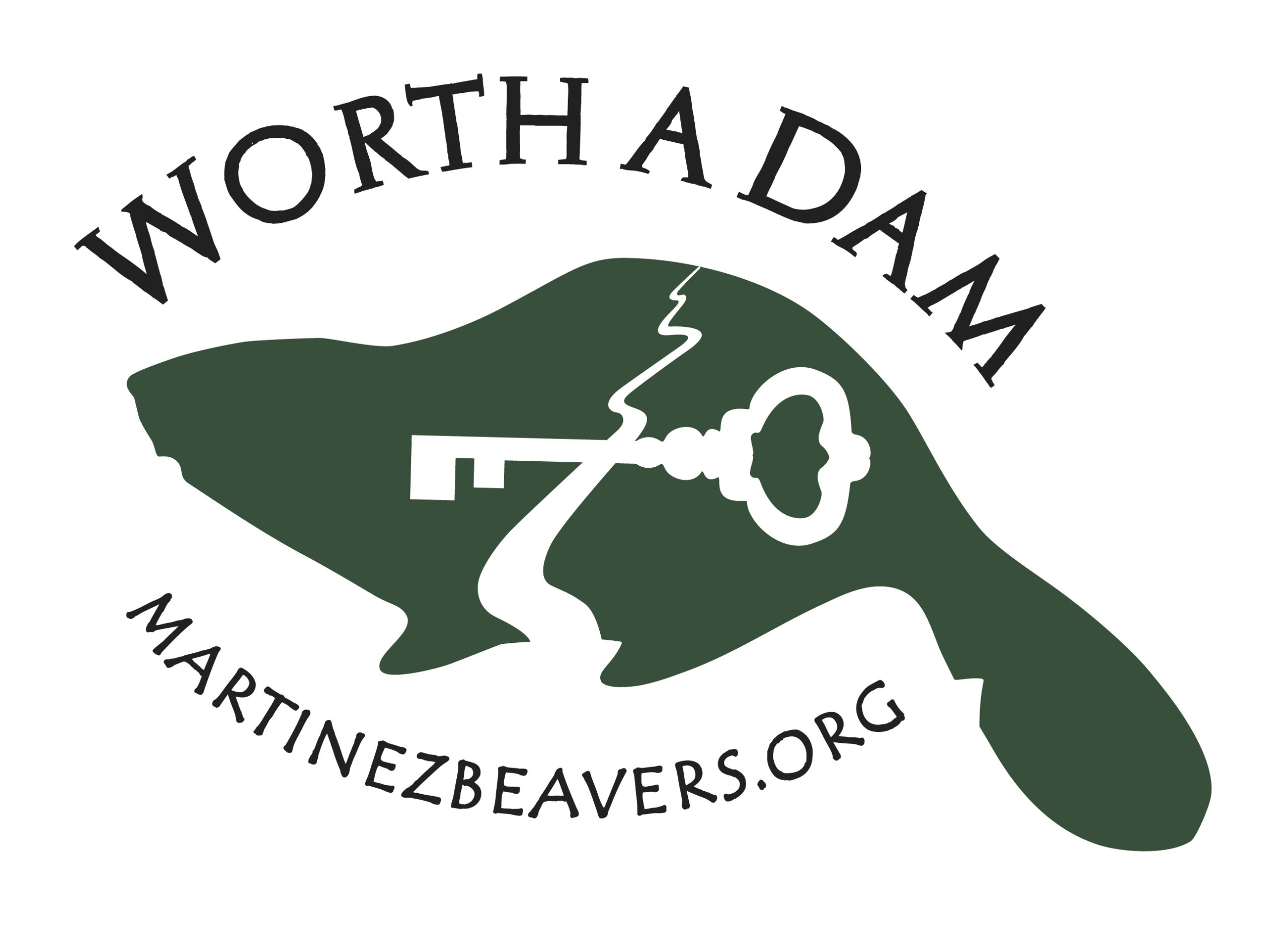



 A large flexible tube goes through the dam and the upstream end of the tube is in a cage located a distance from the dam so the beavers do not discover the source of the ‘leak’ and close it off. The water level will be maintained at a level that will not flood the backyard, but high enough to provide protection for the beavers.
A large flexible tube goes through the dam and the upstream end of the tube is in a cage located a distance from the dam so the beavers do not discover the source of the ‘leak’ and close it off. The water level will be maintained at a level that will not flood the backyard, but high enough to provide protection for the beavers. Having successfully ended a dynasty, unseating longtime incumbent Kirk Robinson and claiming the Commissioner Position 5 of the board for the Bainbridge Island Metropolitan Park & Recreation District, Michael Pollock’s celebration was much less involved than his campaign.
Having successfully ended a dynasty, unseating longtime incumbent Kirk Robinson and claiming the Commissioner Position 5 of the board for the Bainbridge Island Metropolitan Park & Recreation District, Michael Pollock’s celebration was much less involved than his campaign.
 Ten years ago today there was no Worth A Dam, no website, and no beaver community. There were only a bunch of citizens who thought it was a bad idea for their city to kill their beavers and showed up at a meeting to tell them so. This short clip of the UK documentary Beavers Las Vegas, produced by the independent film company Middle Child Productions, shows only the barest HINT of how many passionate and persuasive comments occurred. The clip I put together isn’t very long, but you should definitely watch all the way to the end to understand why it was so successful in changing the city council’s plan.
Ten years ago today there was no Worth A Dam, no website, and no beaver community. There were only a bunch of citizens who thought it was a bad idea for their city to kill their beavers and showed up at a meeting to tell them so. This short clip of the UK documentary Beavers Las Vegas, produced by the independent film company Middle Child Productions, shows only the barest HINT of how many passionate and persuasive comments occurred. The clip I put together isn’t very long, but you should definitely watch all the way to the end to understand why it was so successful in changing the city council’s plan.
 This month’s moon is called the beaver moon, and it was full Saturday.
This month’s moon is called the beaver moon, and it was full Saturday.




